- Premium features included
- No hidden costs or usage limits
- Scale from startup to enterprise


Back in 2009, three guys wanted to fix email delivery—that seemingly simple but actually nightmarish part of running an online business.
Fast forward to today, SendGrid, now part of Twilio’s growing family, has become a major player in the email game, catching the attention of smaller businesses, freelancers, and content creators who need straightforward email tools without the complexity.
Their 60-day free trial lets you keep up to 100 contacts and send 100 emails per day, while AI tools personalize messages and predict optimal send times. But the more important question is: how well does SendGrid compete with other email marketing platforms? Let’s find out together in our SendGrid review.
On paper, SendGrid presents itself as a “cloud-based platform that provides email delivery services”. And while it serves those exact purposes, there’s more to SendGrid than meets the eye.
For starters, it stands out for handling huge email volumes—Twilio reports it sends a staggering 134 billion emails per month, thanks to its purpose-built mail transfer agent. Best part is that you can set it up yourself, depending on your type of business and traffic heaviness—whether you’re managing SaaS notifications or WordPress emails.
Beyond volume, SendGrid offers developer-friendly APIs, customizable templates, real-time analytics, and strong security features. These capabilities make it a great choice for SMBs and businesses looking to scale email campaigns efficiently.
I’ve worked with numerous email platforms, and SendGrid’s advanced features are clearly developed with high-volume senders and developers in mind who prioritize reliable delivery and performance tracking.
For instance, you can create and send promotional emails, newsletters, and announcements within minutes using either their Design Editor or by leveraging their Email API key directly.
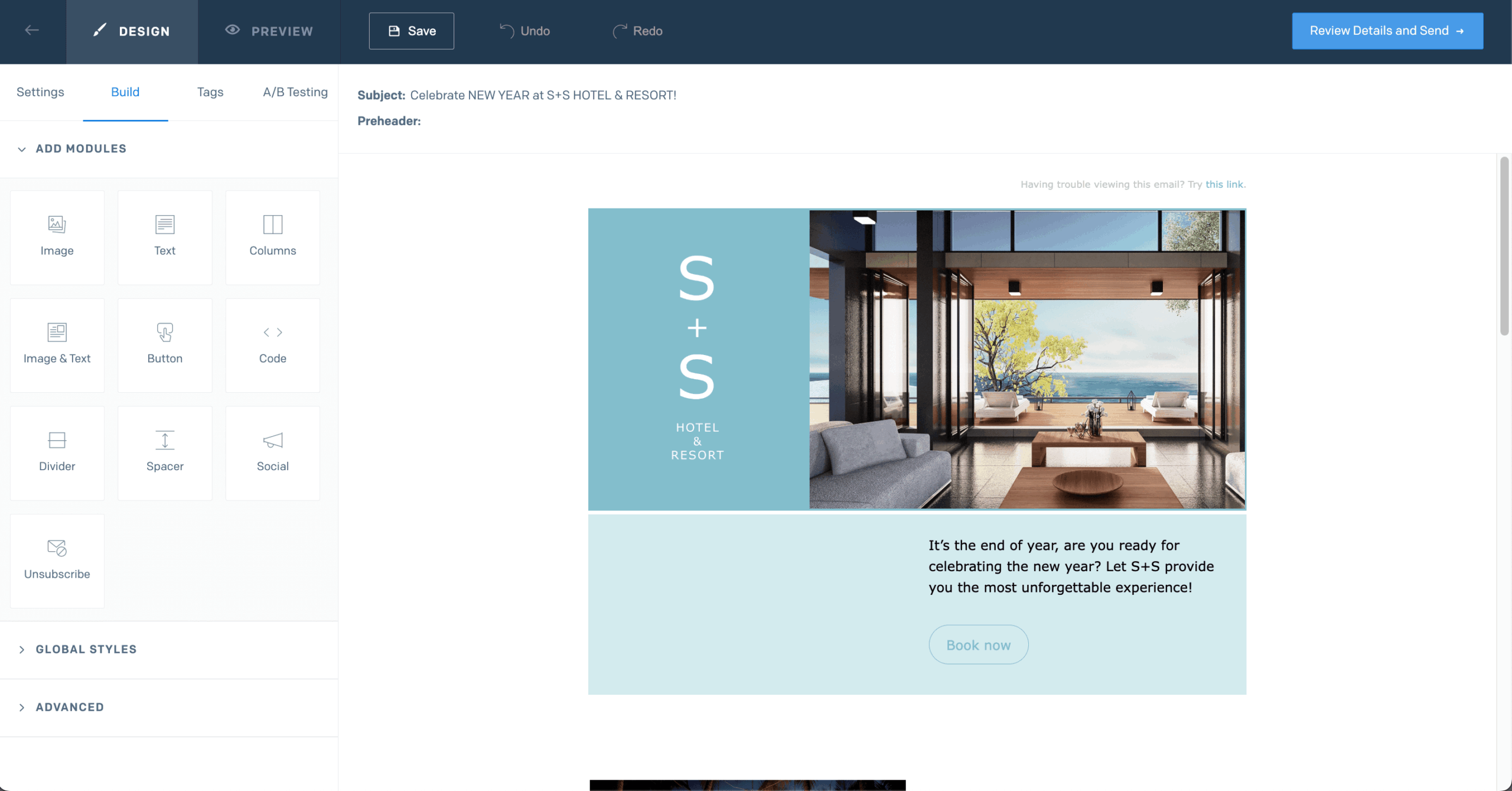
What I like most about SendGrid is how easy it is to personalize emails beyond a simple “insert name,” using data like behavior, location, or past purchases. Sure, the analytics dashboard isn’t flashy, but it shows the metrics that matter—open rates, click-through rates, bounces, unsubscribes, and device-level performance.
When it comes to SendGrid’s email templates and its personalization tools, there’s certainly some room to grow. On the other hand, with 60 pre-made campaign templates, you can spin up a polished send in minutes without starting from scratch or needing to consult SendGrid’s tutorial every few minutes.
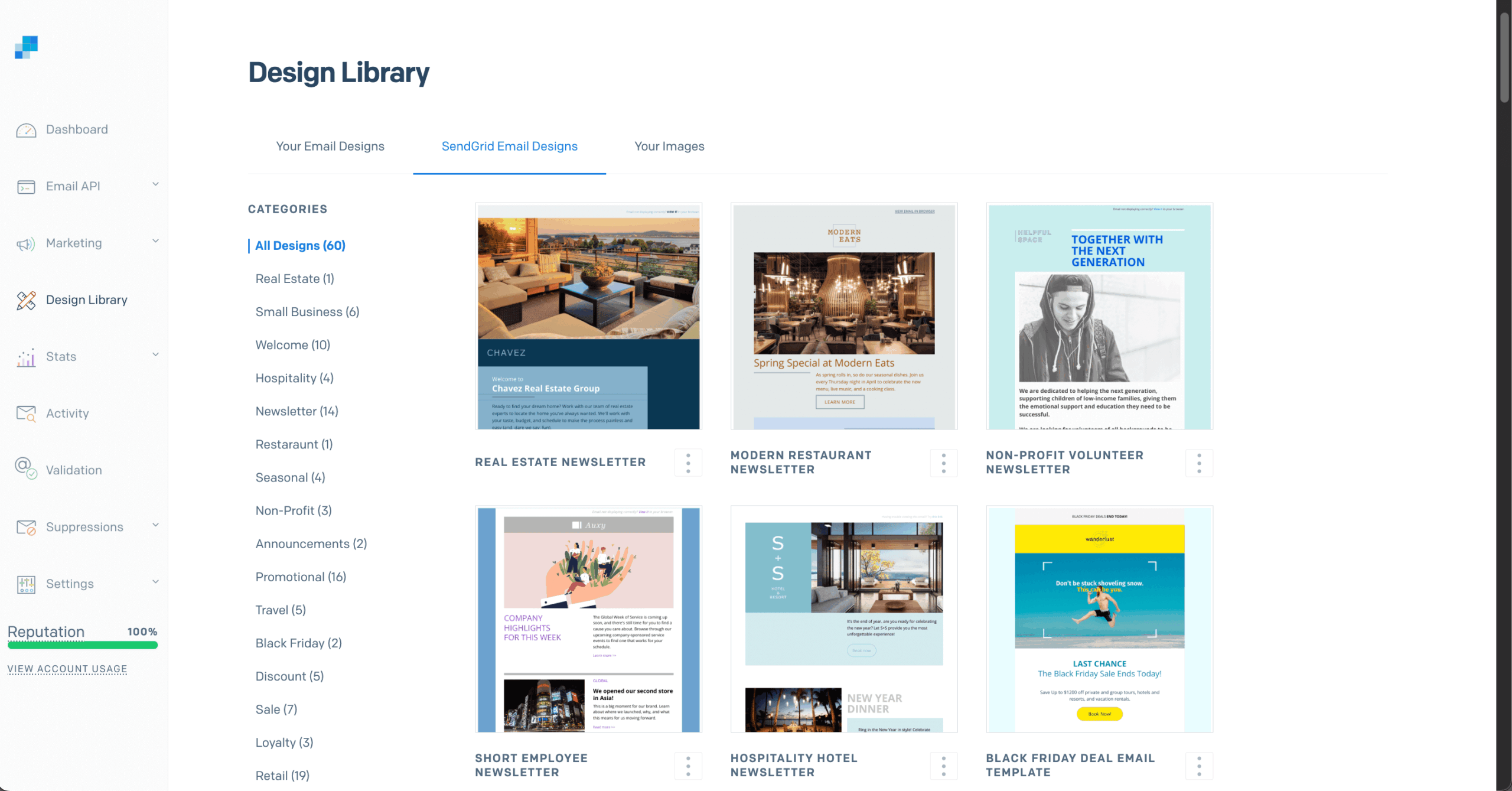
It’s easy to personalize email templates based on my needs and target audience, and the whole process felt seamless. But next to Sender’s personalization toolkit, for instance, it can leave you desiring for more—especially when it comes to drag-and-drop elements like dynamic product recommendations, custom content blocks, or interactive CTAs.
SendGrid takes a streamlined approach to automated email marketing, focusing on time-based and behavior-triggered sequences.
I’ve found it works well for straightforward campaigns like ‘welcome emails’—which, disappointingly, is the only pre-made automation template—but can feel limited when it comes to more complex campaigns, such as multi-step nurturing flows or complex re-engagement journeys.
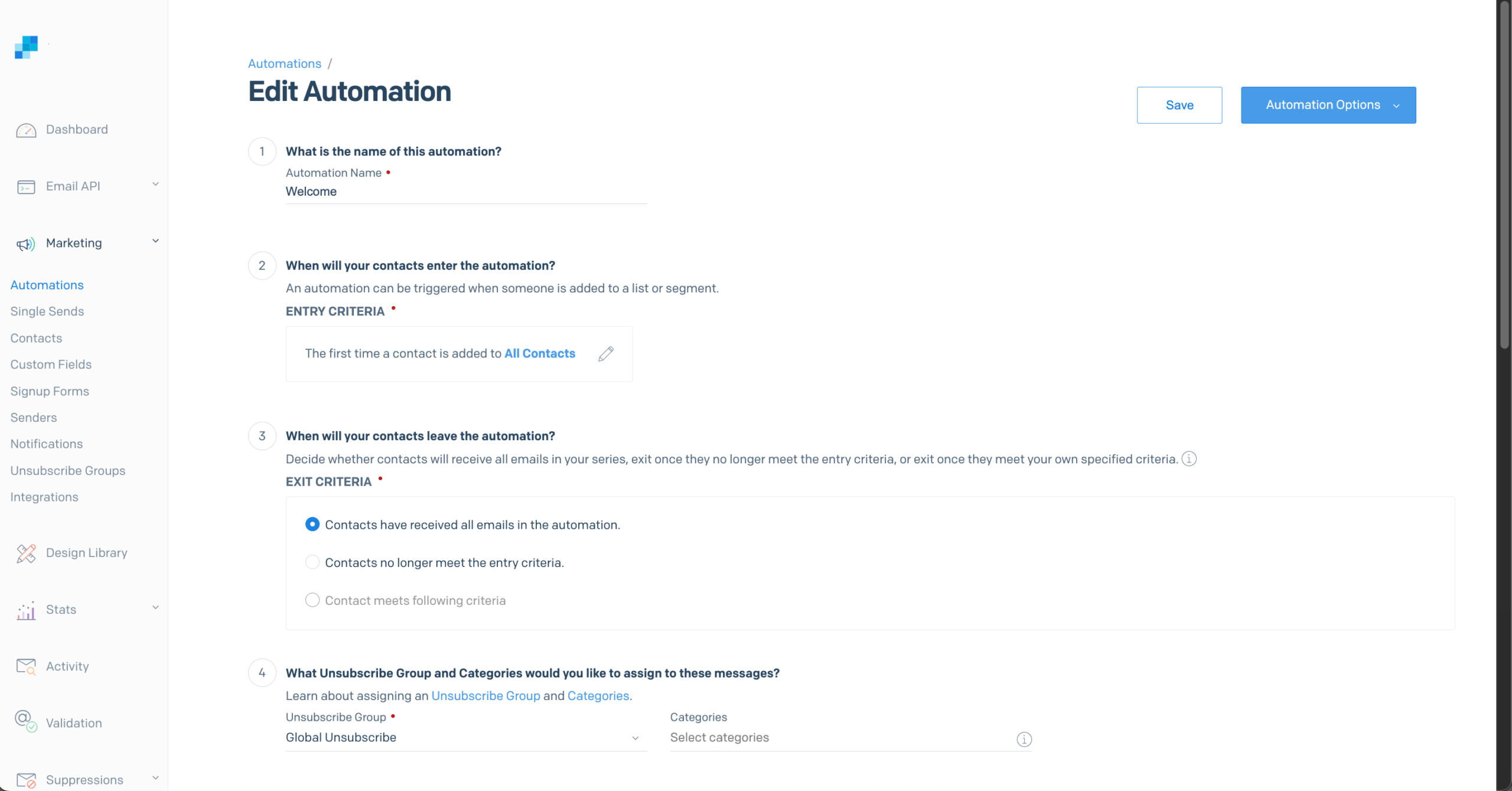
Meanwhile, SendGrid’s visual editor lets you map journeys, set triggers from subscriber actions, and add personalization using contact data. Scheduling is flexible, with options for delays, send times, and cadence. Once live, each message comes with performance metrics so you can quickly see what can be tweaked.
SendGrid stands out as a technically capable platform for managing transactional emails at scale. Its email validation API is reliable and flexible, catering both to developers who want to fine-tune Dynamic Templates for personalized content and to teams that need simple, code-free automations.
The SMTP relay setup is straightforward, though deliverability can occasionally feel inconsistent.
Where SendGrid really shines, though, is in transparency—detailed insights into bounces, spam reports, and customer engagement metrics provide the data needed to troubleshoot and optimize campaigns.
Compared to more marketer-friendly platforms like MailerLite or Sender, it leans developer-first, which offers greater control, but requires more setup and going through documentation to match their ease of use.
The bread and butter of email marketing, transactional emails are what separates the good from the great. During my time with SendGrid, I must’ve sent hundreds of purchase confirmations and welcome emails, and it’s fair to say that its API is well-oiled on this end.
It’s a strong fit for teams with developers, who can fine-tune Dynamic Templates to deliver highly personalized, data-driven emails—a point often praised in SendGrid Email API reviews. At the same time, its API supports straightforward automations that run smoothly without ever needing to dive into the code.
From my experience, SendGrid’s SMTP relay is quite handy. Of course, you’ll need to consult SendGrid’s comprehensive step-by-step guide to set it up (process that took me less than 10 minutes)—unless you want to risk damaging your email deliverability.
Many users set this up to send transactional messages from their WordPress website, and once it’s done, SMTP relay runs smoothly.

That said, I’ve noticed that delivery can sometimes feel a bit janky—whether that’s the fault of SMTP relay functionality is up for debate.
When it comes to email deliverability, Twilio’s SendGrid doesn’t disappoint. During my time using it, with thousands of emails sent, the deliverability rate hovered around a stable 80-85% mark, which is far from the advertised 95.5%. Decent, but not quite top-tier like Sender’s (99%).
What I really value is the level of control—since inbox placement is top priority, SendGrid shows me bounce reasons, spam reports, and ISP engagement, so I know exactly where issues are coming from.
Sure, it’s not a plug-and-play solution. But the transparency makes it worthwhile. Rather than guessing why an email missed the inbox, I got the data I need to adjust and improve over time—an advantage often noted in SendGrid transactional email reviews.
Let me be straight with you—SendGrid’s approach to landing pages and forms is pretty minimal compared to dedicated tools. For starters, it lacks a built-in landing page builder, unlike most competitors, which means users must seek out add-ons like Landing Lion at an extra cost.
The platform primarily supports forms through their Email API and third-party connections. Their native form builder is basic but functional—it lets you gather essential subscriber information like names, email addresses, and custom field data.
If you’re hoping for visually impressive, highly customizable landing pages like what Unbounce or Sender offers, you might be disappointed.
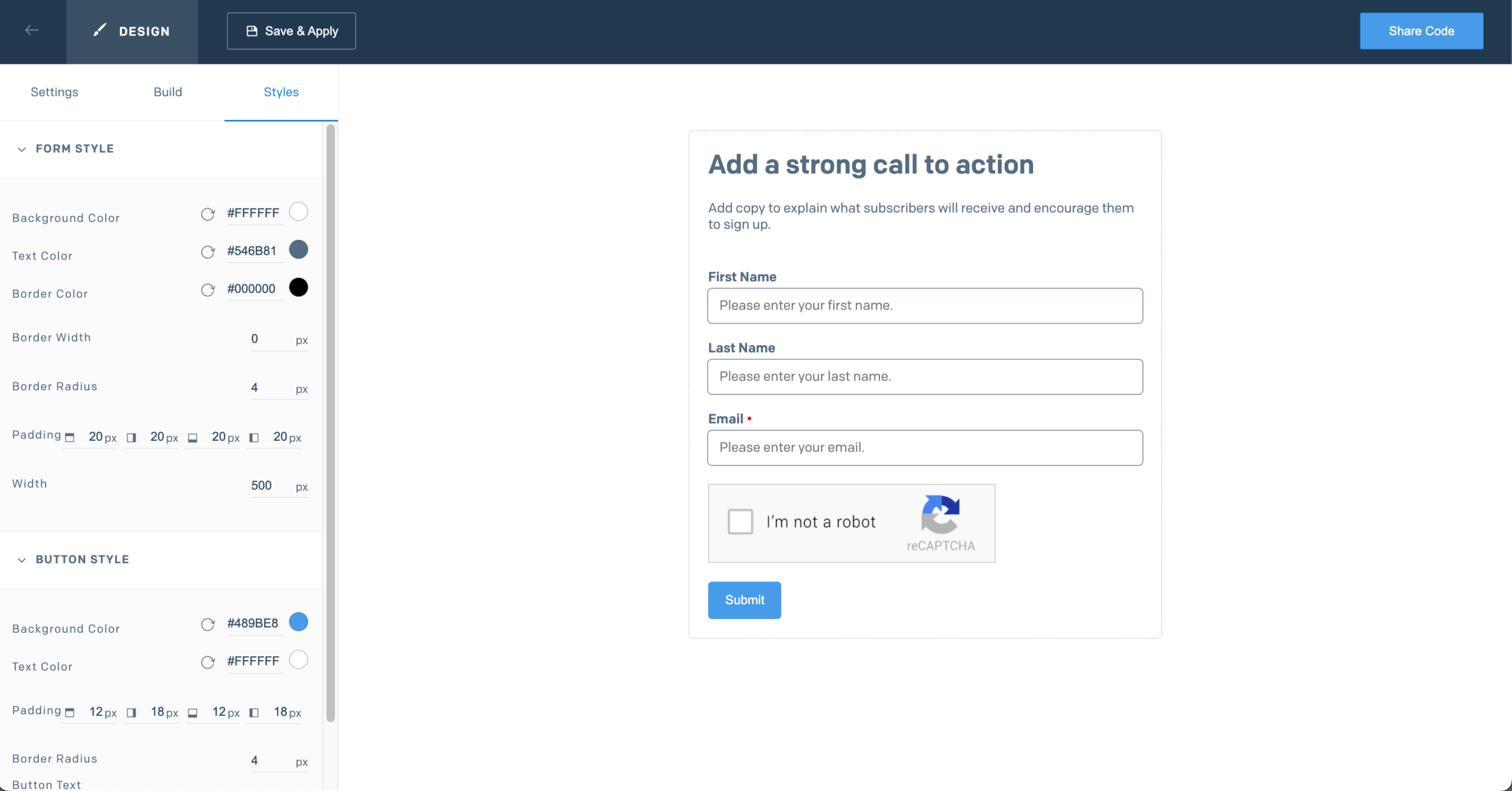
In my experience, SendGrid’s approach to subscriber management reflects its technical DNA. It’s powerful but not particularly intuitive if you’re coming from marketing-focused platforms, such as Sender or Mailchimp.
The system lets you enrich contact lists with custom fields—purchase history, preferences, location data, etc. But while it does the job, it can take a minute to get the hang of its segmentation interface, no matter how experienced you are in email marketing.
On the other hand, SendGrid’s ‘Unsubscribe Groups’ tool takes one of the least enjoyable tasks—managing inactive subscribers—and makes it surprisingly simple.
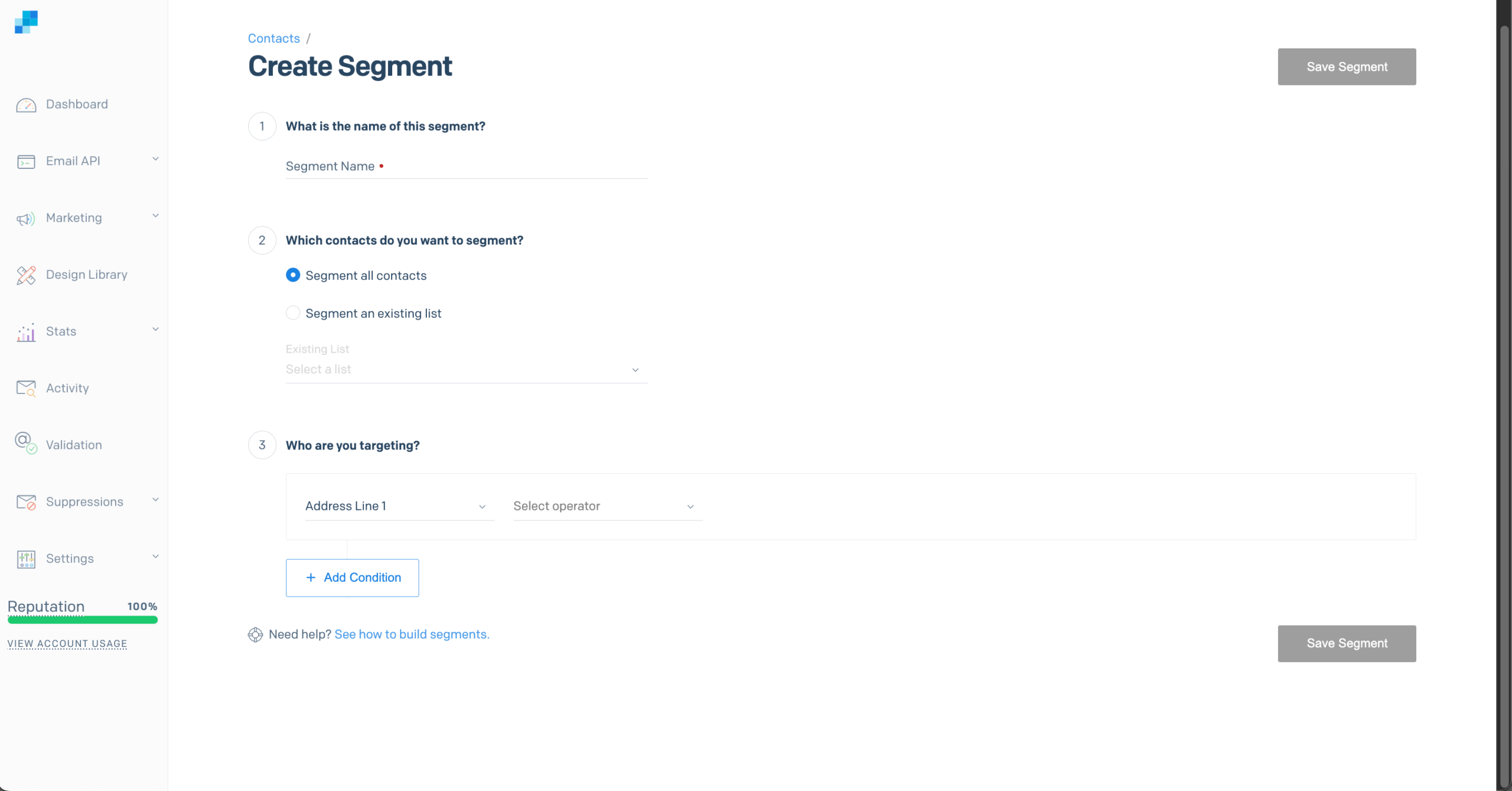
SendGrid truly shines when it comes to its API capabilities and integrations. Their RESTful Email API deserves its stellar reputation—it allows developers to trigger both transactional and marketing emails based on real-time user activity or application events.
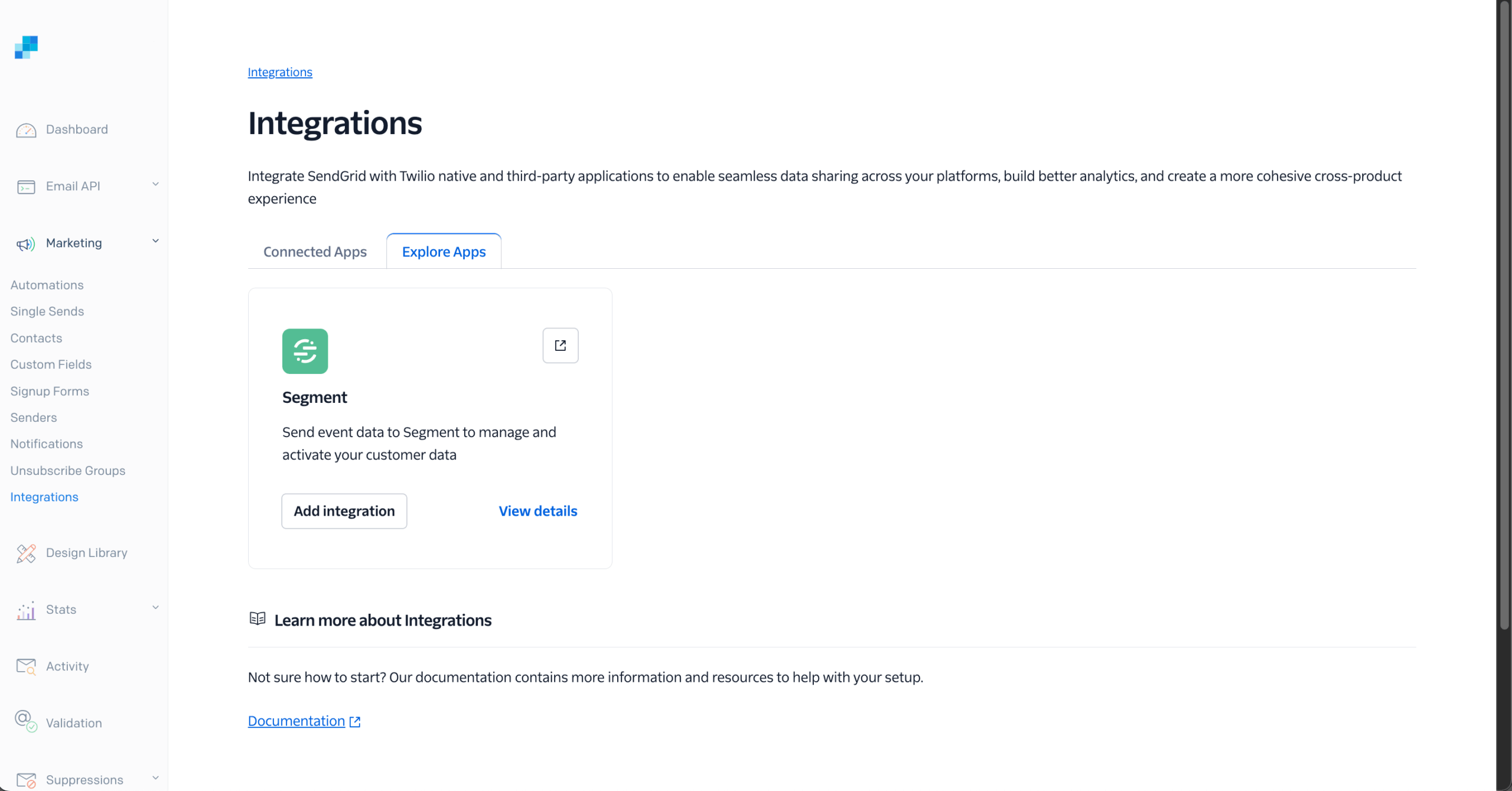
When it comes to integrations, SendGrid falls short with just one native option (‘Segment’ app) for user segmentation. However, through external platforms like Zapier or Blendr.io, SendGrid seamlessly integrates with thousands of apps, including WordPress sites, giving you the flexibility to plug it into almost any marketing or sales stack without too much trouble.
Integrating Twilio’s Communication Platform into my workflow has been a big plus. I liked that everything—SMS marketing, email, chat and even voice support—runs through a single dashboard, which makes scaling much easier. Setup wasn’t overly complicated, though I did lean on the docs a few times.
Beyond core communications, Twilio sets its award-winning CPaaS apart with built-in AI capabilities and real-time personalization through the Segment plug-in. Of course, it’s impossible to see the fruits of such integration right from the get-go, but the benefits of Twilio’s communication functionality are undeniable.
I might be in the minority here, but I see plenty of upsides to SendGrid becoming part of Twilio—most notably the full CPaaS integration. It expanded the platform beyond just email, letting you manage SMS alerts and WhatsApp updates from the same dashboard rather than juggling multiple separate tools. That said, it does take a bit to get the hang of it due to its lackluster interface.
I’ve found SendGrid’s CDP connectivity to be practical, if somewhat narrow in scope. Right now, its only native CDP integration is with Segment. Beyond that, I’ve tested Adobe Experience Platform, using APIs to stream first-party email profiles and segments directly into new SendGrid audiences—I found it rather great for activating personalized campaigns from my customer data pipeline.
Other tools like Lytics and RudderStack proved to be quite handy as well, helping to smoothly import campaign activity (like opens and clicks) and exporting behavior-driven audiences back into SendGrid for targeted sends.
While SendGrid’s reporting features deliver, their presentation feels somewhat bare. Every campaign provides real-time metrics covering the essentials: opens, clicks, bounces, spam reports, and unsubscribes.
But where SendGrid differentiates itself is in technical depth. Device breakdown, geographic engagement patterns, and ISP-level deliverability insights are some of the notable features that help diagnose delivery problems. You can also connect with Google Analytics for richer tracking, making optimization more precise.
For segmented or personalized campaigns, you can filter engagement metrics by contact segments or dynamic field values, revealing which content variations perform best. While the interface feels more technical than marketing-oriented, the data itself is comprehensive and enables precise campaign optimization.
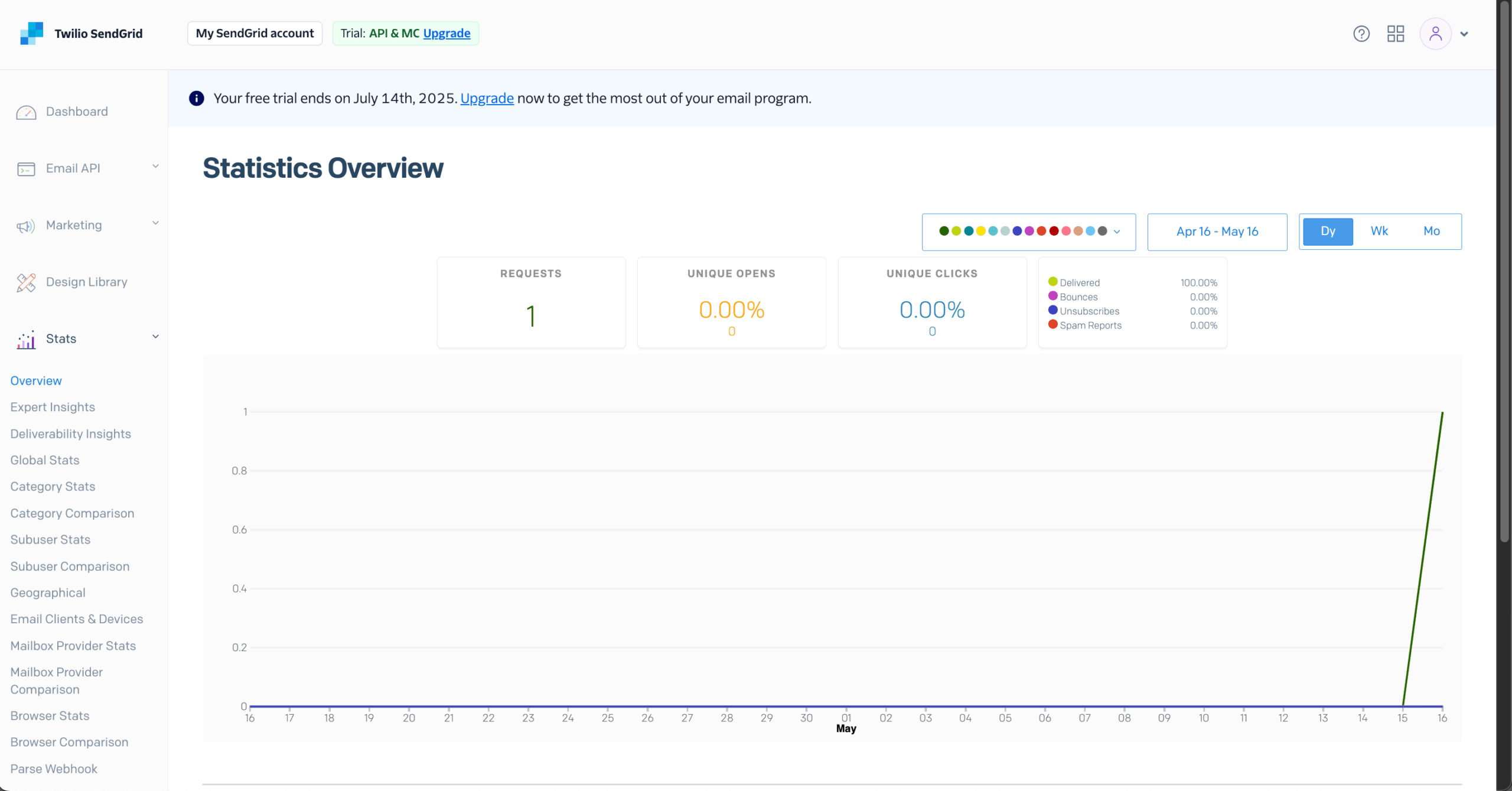
Support quality can make or break your experience with any email platform, and SendGrid takes a rather convoluted approach that reflects its focus on paying customers.
From my experience, SendGrid’s support team really knows their stuff. The 24/7 chat support team, which is included in every plan, helped me out with both technical hiccups and marketing challenges—everything from fixing deliverability issues to fine-tuning campaigns. I wouldn’t say they’re the absolute best, but they’re definitely up there with some of the best support teams around.
The reason I found SendGrid’s support a mixed bag was mainly because of its phone and dedicated support. Phone support works through a call-back system unless you’re on a custom plan, and access to ‘Expect’ services or ‘Personalized’ support comes with an extra cost.
Plan
Price
Email Volume
Key Features
Free Trial
Free for up to 100 emails/day
Up to 100 emails per day
1 Sign-up form, automation, transactional emails, access to API, basic reporting
Basic
$15/month for up to 5,000 contacts
Up to 15,000/month
10 email testing credits, 5 forms, basic reporting, Email API statistics
Advanced
$60 for up to 10,000 contacts
Up to 50,000/month
15 forms, advanced automation, dedicated IPs, Segment connector, live chat support
After working with numerous email platforms, SendGrid’s technical strengths become immediately apparent. Their infrastructure is robust—I’ve seen it handle thousands of emails while maintaining consistent deliverability.
For developers, their RESTful API is a joy to work with—well-documented, logically structured, and reliable.
On top of that, the analytics package provides technical depth that marketing-focused platforms often lack—including device breakdowns, geographic engagement patterns, and ISP-level deliverability insights. These help diagnose and solve delivery problems that might otherwise remain mysterious.
SendGrid also excels in deliverability tools, offering domain authentication, bounce management, and spam complaint monitoring. For teams sending transaction-critical emails, this reliability creates tremendous value.
Despite these strengths, SendGrid has a lot of room to grow. For instance, the visual editor and template system feel dated compared to design-focused platforms like Mailchimp or Sender. The same can be said about its counterintuitive interface that feels like a UI sin in 2025. While non-technical users and email marketing newcomers face a steeper learning curve—especially those unfamiliar with email protocols or API concepts.
The automation capabilities, while functional, lack the complex branching logic found in marketing automation platforms.
My final frustration with SendGrid is its limited starting tier. A/B testing is heavily limited, with automation and personalization feeling rather bare-bones unless you upgrade. Similarly, phone support access is reserved for Custom Plan customers, which can frustrate users who are just starting out or testing SendGrid’s waters.
Perfect For
Look Elsewhere If You Need
SaaS Platforms & Developers
Ideal for API-triggered transactional and bulk emails with reliable deliverability.
Visual Marketing Tools
The template editor lacks design flexibility and modern UX that creative teams expect.
High-Volume Senders
Built to scale with robust infrastructure and deliverability insights down to the ISP level.
Intuitive Campaign Creation
The learning curve and technical focus can slow down marketing-only teams.
Technical Startups
The free plan and comprehensive API documentation support bootstrapped, developer-led projects.
Advanced Marketing Automation
Limited workflow options make it less suitable for complex, multi-step journeys.
Based on my experience helping clients select email platforms, SendGrid makes the most sense for technically-inclined organizations that prioritize reliability and programmatic control.
It’s a natural fit for software companies and SaaS platforms handling transactional emails, as well as ecommerce businesses managing high volumes of order updates and promotional campaigns, thanks to its strong infrastructure and deliverability tools.
SendGrid also appeals to startups with technical teams, who benefit from the generous free tier and clear documentation. Whereas data-driven organizations that rely on detailed analytics for fine-tuning their campaigns will find a great deal to enjoy out of SendGrid, too.
Like most email marketing solutions, SendGrid isn’t for everyone—especially teams that look for a cheap email marketing platform or design flexibility. For instance, marketing teams without technical support may struggle, since its interface is less intuitive than Mailchimp’s or Sender’s. Likewise, small creative businesses or agencies often prefer platforms with richer template libraries and more visually appealing design tools.
It also falls short for organizations focused on advanced marketing automation, where tools like HubSpot or ActiveCampaign shine. Comprehensive A/B testing and user-friendly segmentation are limited unless you upgrade, making SendGrid alternatives, particularly Sender, more practical for marketing-driven teams seeking user-friendly optimization and generous Free forever plans.
Many G2 users highlight SendGrid’s reliability and developer-friendly design. One reviewer praised its clear documentation and multi-language code libraries, calling implementation “very easy and smooth.” Another emphasized how the platform helped reduce bounce rates and spam folder issues, pointing out its scalability, security features, and customization options as standout benefits.
However, not all feedback is positive. Some users find SendGrid’s pricing steep compared to competitors, while others report frustrations with support and migrations. One SendGrid review detailed their difficulties upgrading to a dedicated IP, noting a drawn-out manual warmup process and inconsistent guidance from support (calling it “a nightmare”).
On Trustpilot, many users praise SendGrid for its robust features and ease of use. One reviewer highlighted the platform’s in-app analytics and strong email-sending capabilities, noting that both technical and non-technical team members can navigate it effectively.
Another mentioned long-term satisfaction, citing consistent performance for marketing and transactional emails over three years, along with cost-effective plans that suit businesses of all sizes.
However, some users report frustrations with support. One negative SendGrid Trustpilot review described a confusing email about a service they weren’t using, which required extended interaction with an unhelpful bot to resolve, causing unnecessary stress—which, unfortunately, isn’t the only time users complained about SendGrid’s customer support or “unreasoned” suspensions.
On Reddit, SendGrid marketing reviews get a mix of praise and criticism. Many highlight its ease of use and straightforward API and SendGrid account setup, with one reviewer describing onboarding as a matter of minutes and integration into a codebase as “Boom, it just works.”
Long-time users appreciate its reliability, noting virtually zero problems when handling transactional or marketing emails.
However, Reddit’s criticism largely echoes SendGrid reviews on Trustpilot. One frustrated reviewer highlighted deliverability issues caused by blacklisted IP addresses and frustrating interactions with customer support.
While another shared the frustration about its time dealing with customer support, calling their responses copy-pasted, inattentive, or requiring repeated explanations.
While definitely not game-changing, SendGrid proved to be a solid email marketing platform best suited for developers, SaaS teams, and ecommerce businesses. Its infrastructure is strong enough to handle high volumes, while the RESTful API and SMTP relay make integration smooth for apps and WordPress sites alike.
Reporting features dig deeper than typical marketing tools, too, offering device, geo, and ISP-level insights for troubleshooting deliverability.
That said, its template editor and automation feel pretty basic, and non-technical users may face a learning curve. Pricing starts at $15/month, but advanced support and personalization require the priciest tier or additional spending, making SendGrid better for technically minded teams than design-first marketers.
SendGrid vs. Mailgun
Having worked with both platforms extensively, I’ve found that Mailgun takes a laser-focused approach to transactional email delivery and infrastructure. Whereas SendGrid offers a more balanced approach, blending solid transactional capabilities with marketing essentials like visual campaign editors and basic automation.
SendGrid vs. Mailchimp
If polished campaign design and marketing automation essentials are your priorities, you should go with Mailchimp. On the other hand, SendGrid focuses on reliable infrastructure and developer-friendly APIs, delivering strong transactional performance while still covering essential, if often limited, email marketing needs.
SendGrid vs. Postmark
Postmark has intentionally focused exclusively on transactional email delivery with an emphasis on speed and reliability. They don’t support bulk marketing emails at all. This narrow focus yields impressive performance—Postmark typically delivers emails with minimal lag. On the other hand, SendGrid provides a more comprehensive solution for companies that need both types of communication.
SendGrid’s transactional email API is built for speed, with an average delivery time of just 1.9 seconds. In practice, most critical messages, such as password resets or order confirmations, reach customer’s inboxes almost instantly, with Shopify reporting 90% of email sends arriving in under 4 seconds.
Yes, you can use SendGrid both for email marketing and transactional email purposes. Its Email API and SMTP relay are designed for developers who need reliable delivery of transactional messages like receipts or password resets.
SendGrid also offers basic email marketing tools such as visual campaign editors, list management, segmentation, and automation to run newsletters, promotions, and customer engagement campaigns.
While its design features are more limited than platforms like Sender, it provides a strong balance of marketing essentials and technical infrastructure for teams that want a single, scalable email marketing software.
Yes, SendGrid offers dedicated IP addresses on higher-tier plans, giving you full control over your sender reputation. This is especially valuable for businesses looking for free bulk email services, as it isolates your deliverability from other senders.
SendGrid also provides built-in IP warming tools, which gradually ramp up your sending volume to establish trust with inbox providers. This process helps prevent sudden spikes from triggering spam filters and improves long-term deliverability.
